
|
 |
Kitaplar » AQUACULTURE » Abalon CultureABALON CULTURE Prof. Dr. Atilla ALPBAZ Abalon is a creature that lives in our country and is unknown to the locals, and its flesh cannot be eaten. Those of this species found in the waters of our country are small in size. It is a creature commonly found in the Pacific Ocean. It is a valuable creature whose meat is expensive in America and East Asian countries that have coasts to the Pacific Ocean. There are around 8 species that are cultivated. Some species are up to 20 cm in size and produce very high quality meat[W1] . Abalon is a single shell creature and lives by clinging to stones. Thanks to a mass of meat present in his body, it adheres to stones. The body organ consumed as food constitutes 1/3 of the total body weight of the creature. This creature that lives by sticking to stones can be easily caught by people who know how to dive. As a result, the natural stocks of almost all species have been greatly reduced. For example, 2000 tons were hunted in Australia in 1957. This number dropped to 140 tons in 1993. It was recorded that the yield of natural hunting in California in 1993 decreased by 90% by 1986 on average. The prices are very high due to the decrease in the natural environment. The price of Abalon, 6 of which weighs 1 kg in the USA, is 30 dollars per kg. In Australia, the price per kilo of large Abalons is around $ 50. With the decrease of this species in nature and the increase in the demand of the people, the breeding of this species has been started. Very successful results have been obtained. Abalon farming is very common in the USA, Australia, Japan and other pacific countries and is a high income business. The fact that natural hunting has been restricted and even banned in many places has supported breeding. Abalon breeding has been applied as natural breeding by producing offspring and leaving the produced offspring in controlled areas until recent years. However, in recent applications, studies of fattening under controlled conditions have increased until the era when Abalons are marketed.
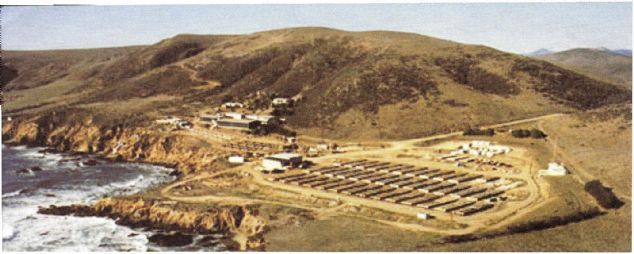 Larval production Abolon is separate sex. Male and female individuals can be easily distinguished by examining the gonads. Gonads are cream to white in males and darker greenish in females. Egg yields are very high. A female of 20 cm size can give around 2 million eggs. Mature males and females selected as breeders expose them to ultraviolet rays or hydrogen peroxide effect, leaving eggs and semen easily. Eggs are about 200 microns in diameter. Eggs in water are fertilized within 2 hours. The hatched larvae swim freely for 5-7 days and feed on the food sac during this period. After this period, they cling to a certain place and begin to feed by filtering the bacteria diatom and microscopic algae in the water. They have a round mouth structure and they feed on foods found on rock or hard ground with their tongue called radula. In human rearing practice, after the larvae are obtained, they are kept in an environment where clean seawater is continuously supplied. A wide variety of tank systems are used for this purpose. Some sample pictures on this subject are presented below.
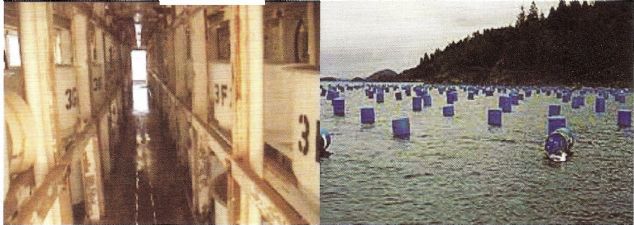 Larvae hatch from the egg takes 16-20 hours. The larva ties a thin shell after 26-30 hours and passes to the velligar stage. The first two months of rearing period is the most critical phase in feeding the larvae. The salinity is kept around 30% and the temperature between 15-18 degrees. During this period, feeding is done with fitaplankton. After two months of age, they are fed with artificial feed. Protein ratio is kept very high in these feeds. There have been great developments in microscopic feeds, which are defined as microcapsule feeds. The cubs reach 6-10 mm height after 6 months. After this period, the offspring are sent to the environment where they will be raised. The places where this application will be made can be in the sea or on land. The food item used after this period is seaweed, which is generally called kelp. Macrocystis pyrifera and Nereocystus luetkeana are the most preferred mosses in California. For this purpose, many locally grown mosses can be used. These feeds are given to Abalons suspended in the sea in cages and offspring rearing studies are carried out. Various baskets and network equipment have been developed in this regard. The offspring grown up to 2-3 centimeters in these cages are sent to the areas where they will be raised for food after this period.
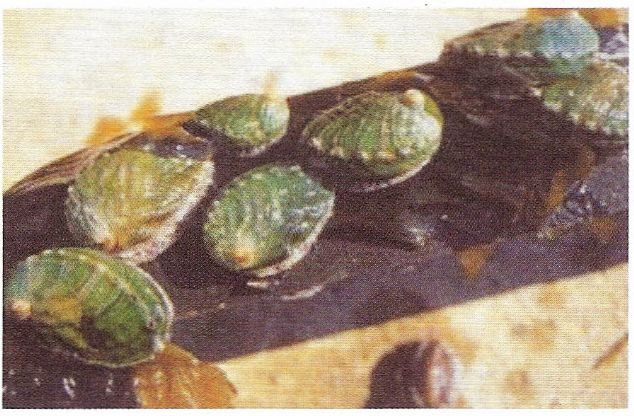 Abalon breeding started in the United States in the 1940s. Interest on the subject is older in Japan. The increase in breeding activities generally occurred after 1950. Abalon fattening companies buy 2-3 cm long offspring from production companies. Fattening can be done in the sea or on land. In land aquaculture, water taken from the sea is transferred to tanks or pools. In addition, plenty of ventilation is provided. Because Abalons with limited mobility are very sensitive to oxygen deficiency. The growing tanks used are between 5-10 m3. It can be concrete or fiberglass. Various criteria are also used in pools. The water depth, if there is a single row of Abalon on the ground, the water depth will cover the Abalons and be 1-2 cm higher than the shell and is planned depending on the size of the abalons. In some breeding practices, Abalons are grown in a row on top of the grid on the shelves. In this case, the water level is calculated according to the racks placed. In the production with the cage made in the sea, the concrete or plastic materials placed in the cages and the abalons are adhered. In a 200 liter cage, 400 pieces of abalon in marketable size can be stored. In large cages, more stocking can be done compared to the unit area. Although the production in the sea is inexpensive; It is known that the production on land is more successful in terms of control. It is a creature with a high unit sales price. Although the development period takes 3-4 years, it is thought that Abalon cultivation will increase further in the future. Development is very slow in abalons. 2 cm Abalons take 3-4 years to reach marketable length (8-10 cm). It is known that the development is shorter both on land and in the sea and it is emphasized that the growing period in canal ponds in Australia can be shortened a little more. There may be differences between the species in terms of adaptation to cultivation in land and sea. The feeding process is done with seaweed called kelp, just like the baby Abalons. Seaweed is purchased from companies that grow in this regard or collected from the regions where it grows naturally. In the United States, there are large kelp beds in California and can be harvested from here with special permission. Kelp is dried after being harvested. It is useful in terms of usage when it is scarce and when the sea is not efficient. In the feeding process, artificial feeds have also been used in recent years. In the process of feeding with artificial feed, it is reported that 1 kg weight gain can be achieved in the living creature fed with 1,3 kg artificial feed (including shell weight). The improvement achieved in breeding is faster than natural development since feeding can be done continuously. Especially, very successful results are obtained from breeding studies in China.
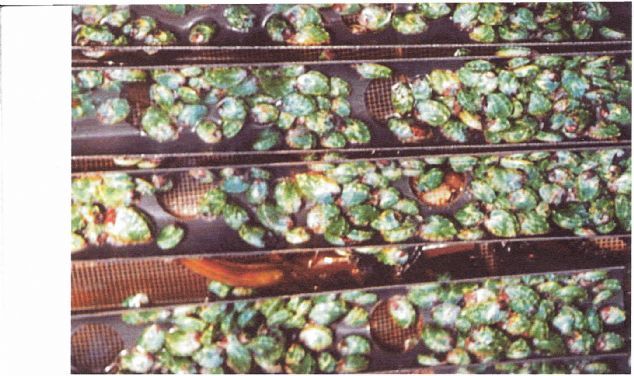 Interestingly, Abalons also produce pearls. Abalon pearl is recognized as a baroque pearl and is of great value. The value of a top quality Abalon pearl is around $ 250-300. Controlled pearl production can be done easily with oysters. This success has not been achieved with Abalons, and studies on this subject are still ongoing. Abalon cultivation is expected to improve in the coming years. Because the sale price of the creature is very high and natural hunting is gradually decreasing. There has been a continuous improvement in breeding techniques. Significant success has been achieved in feeding. Especially China attaches importance to aquaculture activities as an important export product. It is feared that China will affect prices in the world market. However, as natural hunting is almost 90% prohibited in the United States, it will take many years to fully meet the demand. Larvae production has helped to achieve significant success in combating diseases. The opportunities allocated by states for scientific research on the subject are quite high, especially in Australia and the United States of America. It is natural that breeding studies will increase due to such reasons. One of the reasons we deal with this issue is that in our country, which is surrounded by seas on three sides, commercial activities between countries will increase much more in the coming years. When the baby Abalon is brought from abroad and when the breeding is started in the coasts of our country and in very wide diving areas, this type of breeding or similar breeding will be discussed.
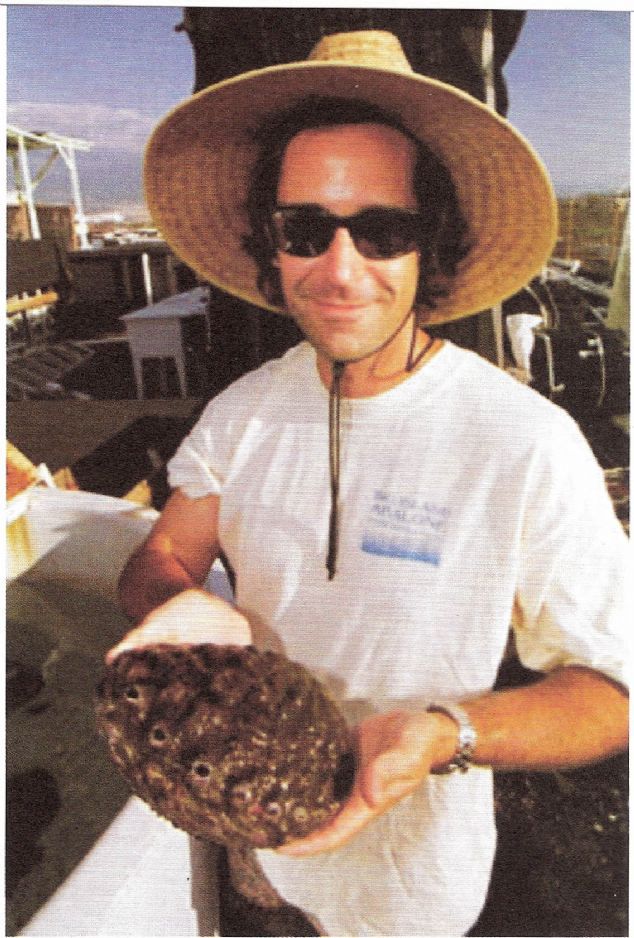 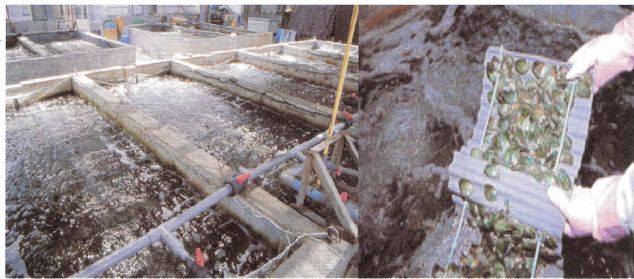 Picture: It is reported that around 200,000 Abalon are grown annually in this Abalon-produced enterprise in Japan and transferred to the marine breeding areas after reaching 2 cm. |




